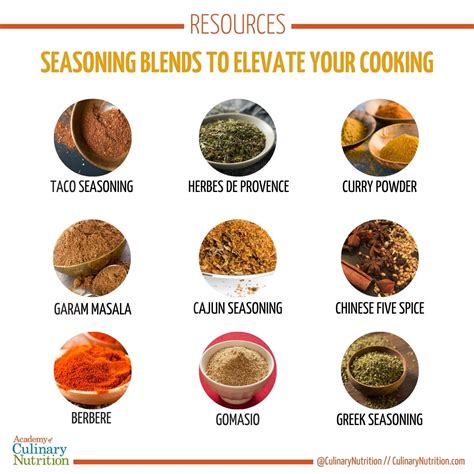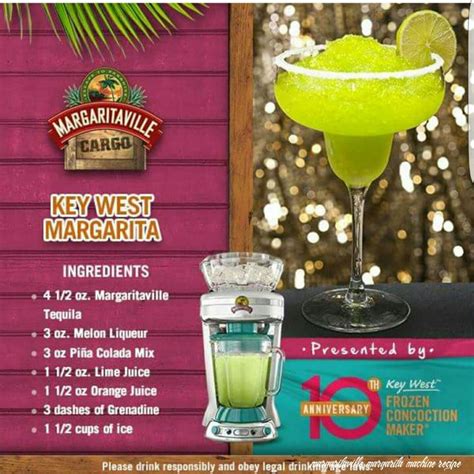Seasoning Recipes to Elevate Any Meal
A well-seasoned dish can transform your food. Fresh, whole ingredients are delicious, especially when they are cooked properly and in season – but good seasoning... The post Seasoning Recipes to Elevate Any Meal appeared first on Academy of Culinary Nutrition.

A well-seasoned dish can transform your food. Fresh, whole ingredients are delicious, especially when they are cooked properly and in season – but good seasoning recipes can dial up the flavour, visual interest, and nutritional properties of your meals. Some of us are accustomed to only salt and pepper, while others developed their palates at a young age with a variety of herbs and spices. No matter where you are on your spice journey, these simple seasoning recipes are easy to make at home and are sure to please.
Why Make Your Own Seasoning Recipes?
We love cooking as much as we can from scratch, and spice mixes, condiments and seasoning recipes fall under that umbrella. While it’s certainly convenient to buy store-bought spice mixes, we like to make our own because:
- You can adjust amounts to your liking, whether for nutritional benefits, personal preference or heat tolerance in mixes that are spicy
- You reduce packaging waste as well as any compounds in packages that might leach into your seasoning
- You can avoid any possible food dyes, preservatives or fillers
- It’s fun and easy to do!
Culinary Nutrition Benefits of Dried Seasonings
There are many reasons to enjoy fresh herbs in recipes like salsa, pesto or guacamole, juices and smoothies, salads, soups and stews, or as finishing garnishes. Dried seasonings help you preserve the flavour and nutrition for longer, and so you can conveniently have them on hand to add flavour to dishes.
The health benefits of dried herbs and spices will depend on which ones you choose, but many have:
- Antioxidants
- Anti-inflammatory compounds
- Blood sugar balancing compounds
- Brain-boosting phytochemicals
- Immune-supportive constituents
- Anti-microbial, antiviral and antibacterial properties
- Circulation enhancing properties
Plus, adding seasoning to recipes may make certain foods like fruits and vegetables more appealing!
Stocking Your Spice Rack for Seasoning Recipes
It can take time to build up a stash of spices in your spice cabinet or pantry. We’ve got a starter list for you in our Guide to Stocking a Culinary Nutrition Pantry, though what you choose to purchase first is very personal.
- Consider the types of food and cuisines you enjoy. For example, if you and your family prefer Italian food you may choose to stock up on dried basil, oregano, thyme, parsley, garlic, and onion.
- Build your pantry with spices you’ll actually use.
- Consider your budget. Singular herbs and spices aren’t extremely expensive, but it can add up if you’ve got dozens of them in your pantry!
More spice rack tips:
- Buy dried herbs and spices in small quantities. While it may seem like a good idea to buy in bulk, you want your seasoning recipes to be flavourful. Huge amounts of bulk spices may go stale and lose their taste over time (remember, if it isn’t fragrant in your spice jar it’s not going to magically taste better once your food is cooked!). Small quantities also allow you to try out new spices without ending up with a ton leftover.
- Purchase from stores that have a high turnover. This makes it more likely that you will get fresher dried herbs and spices, as opposed to a jar that’s been sitting on the shelf or in a warehouse for a long, long time.
- Purchase whole seeds and grind them yourself. This helps them last longer.
- Opt for organic, non-irradiated spices if possible. Food irradiation destroys some of their nutrients.
- Store your dried spices and herbs in air-tight containers to prevent spoilage.
Fun With Salt
Salt is one of the most common seasonings that people use in their kitchen. We have a full guide to salt in this post, but you can also jazz up your salt in some very fun and tasty ways! Try:
- Mixing some homemade dried citrus zest into your salt
- Folding in some ground dulse (or another seaweed) for extra minerals
- Making herbes salées, a preserved salt with fresh herbs (it’s also a great way to use up herby bits and bobs so they don’t go to waste)
- Smoking sea salt
- Adding chili peppers for spicy salt
10 Seasoning Recipes to Elevate Any Meal
As we mentioned earlier, seasoning food is very personal. It’s cultural, too. Communities around the world have their preferred seasoning recipes and there is a degree of variation in how people enjoy their blends (especially if they like to cook without a recipe). We’ve included some of our favourites here, but please let us know in the comments what you love!
Taco Seasoning
What Is It?
This spice blend is used in Mexican cooking and includes chili powder, cumin, garlic, onion, paprika and oregano. You can alter taco seasoning to make it as mild or spicy as you choose.
Recipe to Try: Homemade Taco Seasoning by Isabel Eats
Herbes de Provence
What Is It?
Herbes de Provence features herbs that come from southeastern France and typically include a variety of herbs like thyme, marjoram, basil, rosemary, savory, and tarragon.
Recipe to Try: Herbes de Provence Blend by The Spruce Eats
Curry Powder
What Is It?
Curry powder is a blend of spices that is often associated with Indian food, but it was actually created by British colonialists to replicate the dishes they witnessed Indian people cooking. Curries, as a category, spread to many other cultures. You’ll see curry dishes in Japanese, Thai and Caribbean cooking, though there are many who argue that ‘curry’ in and of itself doesn’t actually exist.
There are many, many curry powder recipes available; many have ingredients like turmeric, ginger, cumin, coriander, mustard seeds, and more. We’ve included some simple ones below!
Recipes to Try: Easy Curry Powder Recipe by Healthier Steps and Yellow Curry Powder by Cardamom and Tea
Garam Masala
What Is It?
Garam masala is a traditional seasoning blend that originated in Northern India and is heavily used in Indian cooking. It typically is a mix of coriander, cumin, black pepper, cinnamon, nutmeg, and cloves.
Recipe to Try: Homemade Garam Masala by Vegan Richa
Cajun Seasoning
What Is It?
This spice blend originated in the Southern United States, mainly Louisiana. It has a smoky, spicy flavour and typically contains paprika, onion, garlic, black pepper, oregano, and cayenne.
Recipe to Try: Cajun Seasoning by The Flavor Bender
Chinese Five Spice
What Is It?
This warming spice mix is used in Chinese dishes. It uses fennel, Sichuan peppercorns, cinnamon, star anise, and cloves, which are usually toasted whole and then ground into powder.
Recipe to Try: Homemade Five Spice Powder by Omnivore’s Cookbook
Berbere
What Is It?
A seasoning mix used in Ethiopian cuisine. It is typically on the spicy side, using chili, paprika, smoked paprika, ginger, and peppercorns, along with additional spices like fenugreek, coriander, cardamom, allspice, and cinnamon.
Recipe to Try: Berbere Spice by Eleni’s Kitchen
Gomasio
What Is It?
Gomasio, or gomashio, is a simple seasoning of toasted and crushed sesame seeds mixed with salt that is used in Japanese cooking. Some recipes may also include seaweed like nori.
Recipe to Try: Gomasio by The Daring Gourmet
Greek Seasoning
What Is It?
Greek seasoning blends use dried herbs that are common in Mediterranean cuisine like oregano, basil, dill, black pepper, garlic, and onion.
Recipe to Try: Easy Greek Seasoning Blend by Sweet Peas and Saffron
Serundeng
What Is It?
A crispy Indonesian condiment made from stir-fried coconut along with seasonings such as kaffir lime leaves, galangal, coriander, cumin, and garlic.
Recipe to Try: Serundeng by What To Cook Today
The post Seasoning Recipes to Elevate Any Meal appeared first on Academy of Culinary Nutrition.

 mainadmin
mainadmin 










